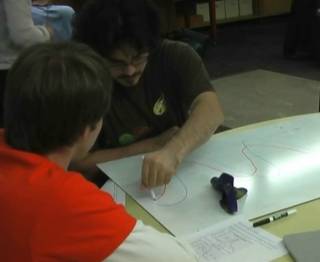You are here: start » activities » main
Three driving voltages
Highlights of the activity
- This small group activity is designed to help upper-division undergraduate students understand the response of an LRC circuit to a superposition of sinusoidal voltages.
- Students predict the response of a series LRC circuit to a single harmonic voltage and calculate the response of the circuit given a graph of admittance amplitude and phase.
- The whole class discussion focuses on the interpretation of the graphical representation of admittance (amplitude/phase) and how to build the response of a multiple-frequency driver from the individual responses.
Reasons to spend class time on the activity
Students calculate the response of a series LRC circuit given the graph of admittance amplitude and phase. The interpretation of graphical information is important and the students' skills need building. The activity is the reverse process to generating the response curve, a previous recent exercise, and this reverse activity cements the previous activity and suggests a reason for undertaking it in the first place. Superposition and linear response is foreshadowed. Although the students have not been formally introduced to linear operators in this context, they are quite willing to believe that a superposition of driving voltages should result in a response that is the superposition of individual responses. They can plot the superposition of the three and realize that the response is very strongly determined by the driving voltages near the resonant frequency, even if the size of the non-resonant driving voltage is large.
